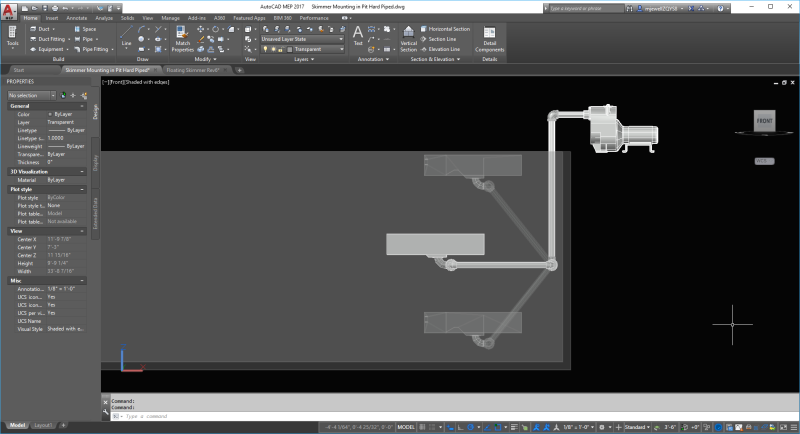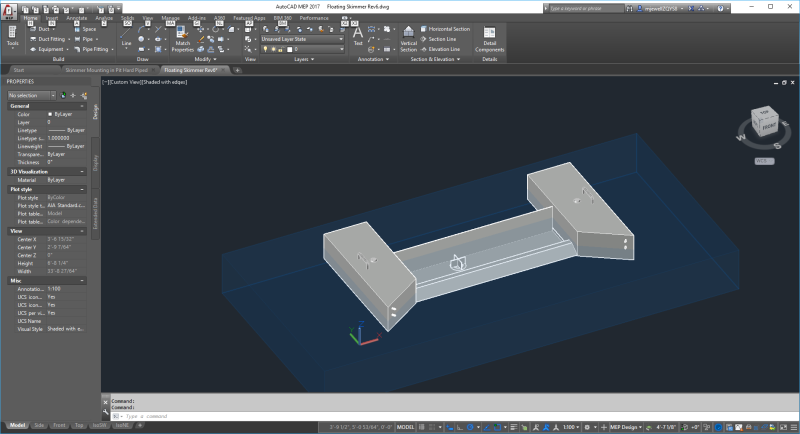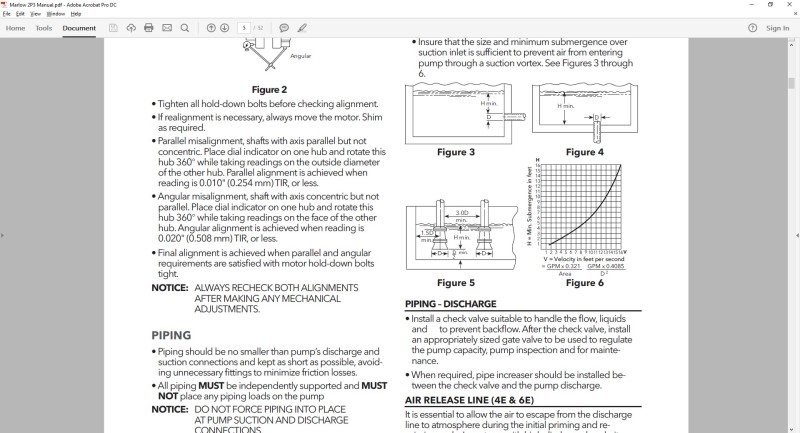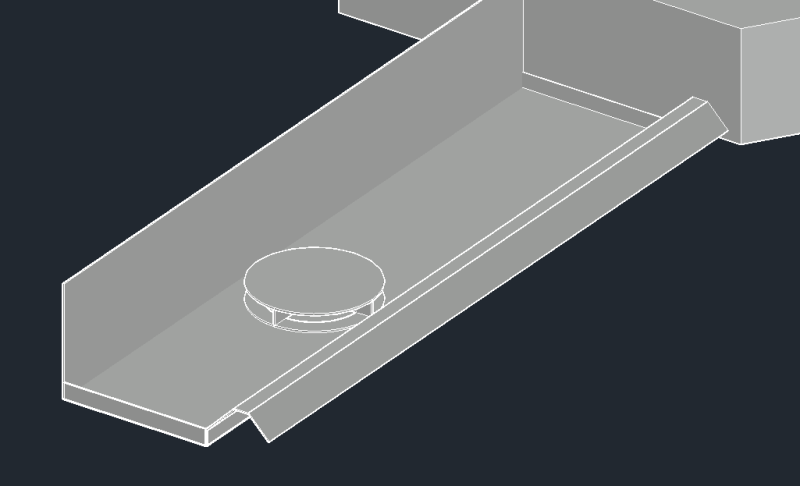I am designing a floating skimmer that will draw off the top 1" of fluid in a pit. The skimmer has a sump that will hold ~4" of water (total volume of ~5 gallons). The suction line is connected to the bottom of the sump. The pump suction line is 2 inch schedule 40. My operating point on the pump curve with the pump I plan to use (using my estimated system curve) will be about 100 gpm. Using submergence rule, I should have ~6 feet of water to prevent air entrainment due to vortexing. I put a small vortex breaker at the suction line inlet, but have no experience with actual design of a vortex breaker, so I have concerns that I may still get air in the suction. I attached some images to show my current layout and design. CFD isn't an option to confirm the design. I've read some older threads on here and some articles online and think I have some basic direction I want to go. That said, anyone have any tips on avoiding air entrainment or vortex breaker design?
Edit: also want to add that the pit is open atmospheric and the fluid is water typically 70-95 degreeF.


Edit: also want to add that the pit is open atmospheric and the fluid is water typically 70-95 degreeF.




